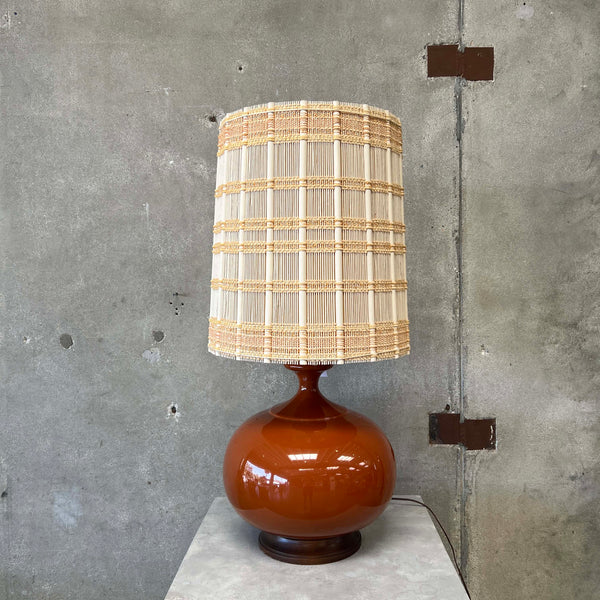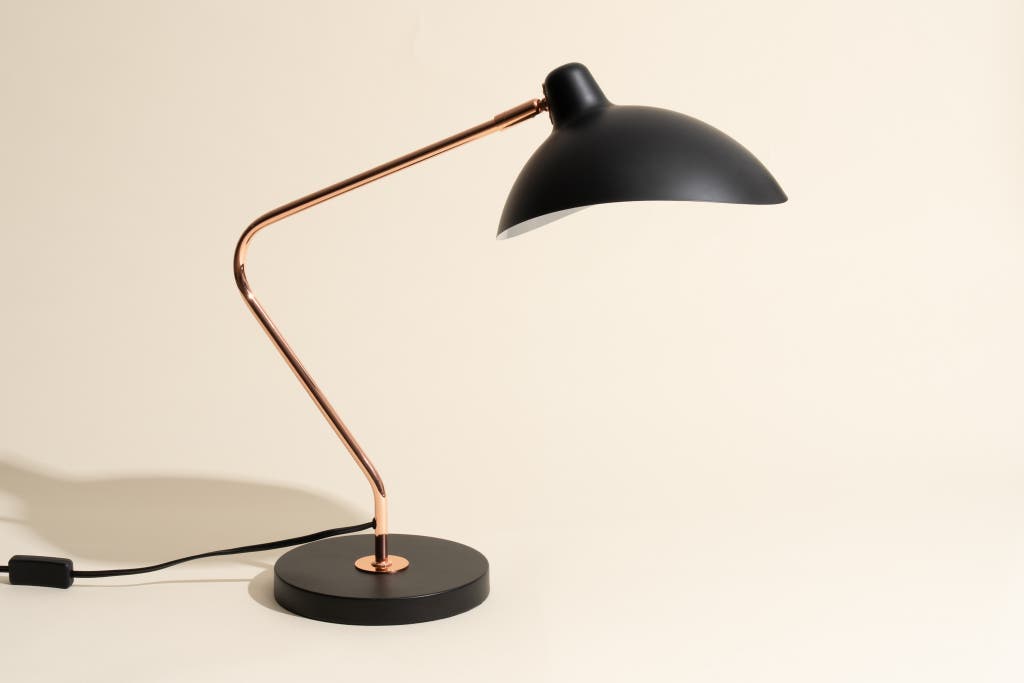Have you ever picked up a mid-century desk lamp and been surprised by its weight? You might wonder why these lamps feel so solid compared to modern ones.
That heaviness isn’t just a random design choice—it tells a story about quality, durability, and style. If you’re curious about what makes these lamps so sturdy and why that matters for your workspace, keep reading. Understanding this can change how you see mid-century desk lamps—and maybe even how you choose your next lamp.

Credit: www.nytimes.com
Design Features Of Mid-century Desk Lamps
The design of mid-century desk lamps is a fascinating mix of style and practicality. These lamps are not just about looks; their design carefully balances form and function. Understanding their design features helps explain why these lamps tend to be heavier than modern counterparts.
Materials Used In Construction
Mid-century desk lamps often use solid metals like brass, steel, and aluminum. These materials add durability and a premium feel to the lamp. Unlike today’s plastic-heavy designs, metal parts contribute significantly to the lamp’s weight.
Wood and glass elements are sometimes added, enhancing both style and sturdiness. You might have noticed how these materials feel substantial in your hand—this is intentional. The choice of materials ensures the lamp lasts for decades, resisting wear and tear.
Weight Distribution And Stability
These lamps are designed to stay firmly in place on your desk. A heavy base anchors the lamp, preventing it from tipping over when you adjust the shade or arm. This stability is crucial for everyday use, especially when you’re moving the lamp frequently.
Designers often add weight to the base rather than the top, balancing the lamp perfectly. Have you ever bumped a light and watched it wobble? Mid-century lamps avoid this problem with smart weight distribution. The extra heft might feel inconvenient at first but improves functionality.
Aesthetic And Functional Choices
The mid-century style favors clean lines and bold shapes, often requiring thicker materials and solid construction. These choices make the lamp visually striking but also contribute to its weight. The heavy metal shades and articulated arms are part of this aesthetic.
Functionality also plays a role—adjustable arms and swiveling heads need sturdy joints and parts. These components add bulk but allow precise control over light direction. When you use one, you’ll notice how smoothly it moves without feeling flimsy.
Have you ever thought about how these design choices affect your workspace experience? Heavy lamps might seem cumbersome, but they offer reliability and style that lighter lamps often lack.
Manufacturing Techniques
Mid-century desk lamps feel heavy due to the strong manufacturing techniques used. Builders focused on durability and stability. These lamps often had many metal parts, making them solid and steady. The way these parts were made and put together adds to their weight.
Metal Casting And Components
Many mid-century lamps used metal casting for parts like the base and arm. Metal casting involves pouring molten metal into molds. This process creates thick, dense parts that last long. Metals like brass, steel, and iron were common. These metals add weight but also strength. The parts were often solid, not hollow, which made the lamps heavier.
Assembly Methods
The assembly of these lamps was done with care. Screws, bolts, and strong joints held parts tightly. Welds were common to join metal parts securely. This made the structure firm and less likely to wobble. The lamps had fewer plastic parts, so they relied on metal connections. The assembly aimed to keep the lamp stable on desks.
Quality Standards Of The Era
Manufacturers followed strict quality standards in the mid-century. Products were built to last for decades. Heavy materials and sturdy construction met these standards. The focus was on reliability and safety. Lamps were tested to withstand daily use. This commitment to quality increased their weight but ensured longevity.
Purpose Behind The Weight
Mid-century desk lamps are heavy because they use solid materials like metal and marble for stability. This weight keeps the lamp steady and prevents tipping during use. Designers focused on durability and balance, making these lamps both functional and stylish.
Understanding why mid-century desk lamps are so heavy can enhance your appreciation for these iconic pieces. The weight isn’t just a random characteristic—it’s purposeful and functional. Let’s explore the reasons behind their heft.Durability And Longevity
Mid-century desk lamps were built to last. The use of sturdy materials like brass and cast iron ensured they could withstand the test of time. This durability means many of these lamps are still in great condition today, often becoming cherished heirlooms. A heavier lamp withstands daily wear and tear better. You won’t find them easily dented or damaged. This robustness adds to their value and desirability.Preventing Tipping And Movement
A solid base keeps your lamp upright. Ever tried using a lightweight lamp only to have it topple over at the slightest nudge? Annoying, right? The weight of mid-century lamps prevents tipping. It provides stability, so they stay put even on cluttered desks. This makes them practical for everyday use.Reflecting Design Trends
Mid-century design favored bold, statement pieces. Heavier lamps complemented this trend, exuding a sense of permanence and style. They weren’t just functional; they were part of a room’s aesthetic. The weight often accompanied unique designs. Think of those iconic shapes and curves that defined an era. Would a flimsy lamp have the same impact? When you choose a mid-century desk lamp, you’re opting for more than just lighting. You’re investing in a piece that combines form and function, reflecting a thoughtful design philosophy. Would you prefer a piece that simply illuminates or one that also tells a story?
Credit: urbanamericana.com
Comparison With Modern Desk Lamps
Comparing mid-century desk lamps to modern ones reveals clear differences. The weight is one of the most noticeable contrasts. Older lamps feel solid and sturdy, while many new lamps are lighter and more portable. These differences come from materials, design choices, and user needs. Understanding these points explains why mid-century lamps are so heavy.
Material Differences
Mid-century desk lamps often used metals like brass, steel, and cast iron. These materials add weight but also durability. The thick metal parts give a strong, lasting structure. Modern lamps use lighter materials such as aluminum, plastic, or thin steel. These materials reduce weight but may sacrifice some durability. Some modern lamps also use composites and synthetic materials to cut down weight further.
Changes In Design Priorities
Mid-century designs focused on stability and longevity. Designers chose heavy bases to prevent tipping. The lamps often had intricate mechanical joints made from solid metal. Today, design priorities include portability and ease of adjustment. Manufacturers favor lightweight frames and minimalistic styles. New designs may trade some stability for convenience and style. This shift changes the overall weight of the lamps.
Impact On User Experience
Heavier mid-century lamps offer a steady, reliable feel on the desk. They do not move easily and provide a sense of quality. Lighter modern lamps are easier to move and adjust quickly. They suit flexible workspaces and changing setups. However, lighter lamps may feel less sturdy and can tip over more easily. User preferences depend on the balance between weight and convenience.
Collecting And Maintaining Heavy Desk Lamps
Collecting and maintaining heavy mid-century desk lamps requires care and knowledge. These lamps often feature solid metals and dense materials that give them weight and durability. Their substantial build adds charm but also demands careful handling and upkeep. Understanding how to identify genuine pieces and care for their heavy components helps preserve their value and beauty.
Identifying Authentic Pieces
Authentic mid-century desk lamps have unique design features. Look for marks from known manufacturers or designers. Check the quality of materials like brass, steel, or cast iron. Weight can hint at authenticity since originals use solid parts. Inspect joints and screws for craftsmanship. Replicas may use lighter, cheaper materials that feel hollow. Knowing these signs helps find true vintage lamps.
Care Tips For Heavy Materials
Heavy lamps need gentle care to avoid damage. Use a soft cloth to dust regularly. Avoid harsh chemicals that can harm metal finishes. For brass or bronze, use polish designed for those metals. Lift lamps from the base, not the arm or shade. Keep lamps away from moisture to prevent rust. Tighten loose screws carefully to maintain stability. Proper care keeps lamps looking great and working well.
Value And Market Trends
The demand for heavy mid-century desk lamps remains strong. Collectors value solid construction and original finishes. Prices rise for lamps from famous designers or brands. Condition affects value greatly; well-maintained lamps fetch higher prices. Trends show interest in vintage office and study accessories. Heavy lamps often stand out in auctions and sales. Tracking market trends can guide smart collecting choices.

Credit: www.nytimes.com
Frequently Asked Questions
Why Are Mid-century Desk Lamps So Heavy?
Mid-century desk lamps are heavy due to their solid metal bases and high-quality materials. These materials ensure stability and durability, preventing the lamp from tipping over easily. The design focuses on both function and longevity, making the lamps sturdy and long-lasting.
What Materials Make Mid-century Desk Lamps Heavy?
These lamps often use brass, steel, and cast iron, which add significant weight. The heavy metals provide a stable base and a premium feel. Designers prioritized durability and stability, resulting in lamps that are both functional and visually appealing.
Does Lamp Weight Affect Desk Lamp Stability?
Yes, heavier lamps offer better stability on desks. The weight prevents accidental tipping or movement during use. Mid-century designs use weight strategically to balance style and practicality, ensuring the lamp stays securely in place.
Are Heavy Mid-century Lamps More Durable?
Generally, yes. The use of dense metals and solid construction improves durability. Heavy lamps resist damage from knocks and daily use. Their robust build contributes to a longer lifespan compared to lighter, less sturdy lamps.
Conclusion
Mid-century desk lamps feel heavy because of their solid materials. Designers used metals like brass and steel for durability. The weight keeps lamps stable and prevents tipping. Thick bases and sturdy arms add to the heaviness. This design shows quality and long-lasting use.
These lamps blend style with function well. They remain popular for their classic look. Owning one means appreciating strong, thoughtful design. Heavy, yes—but made to last many years.





